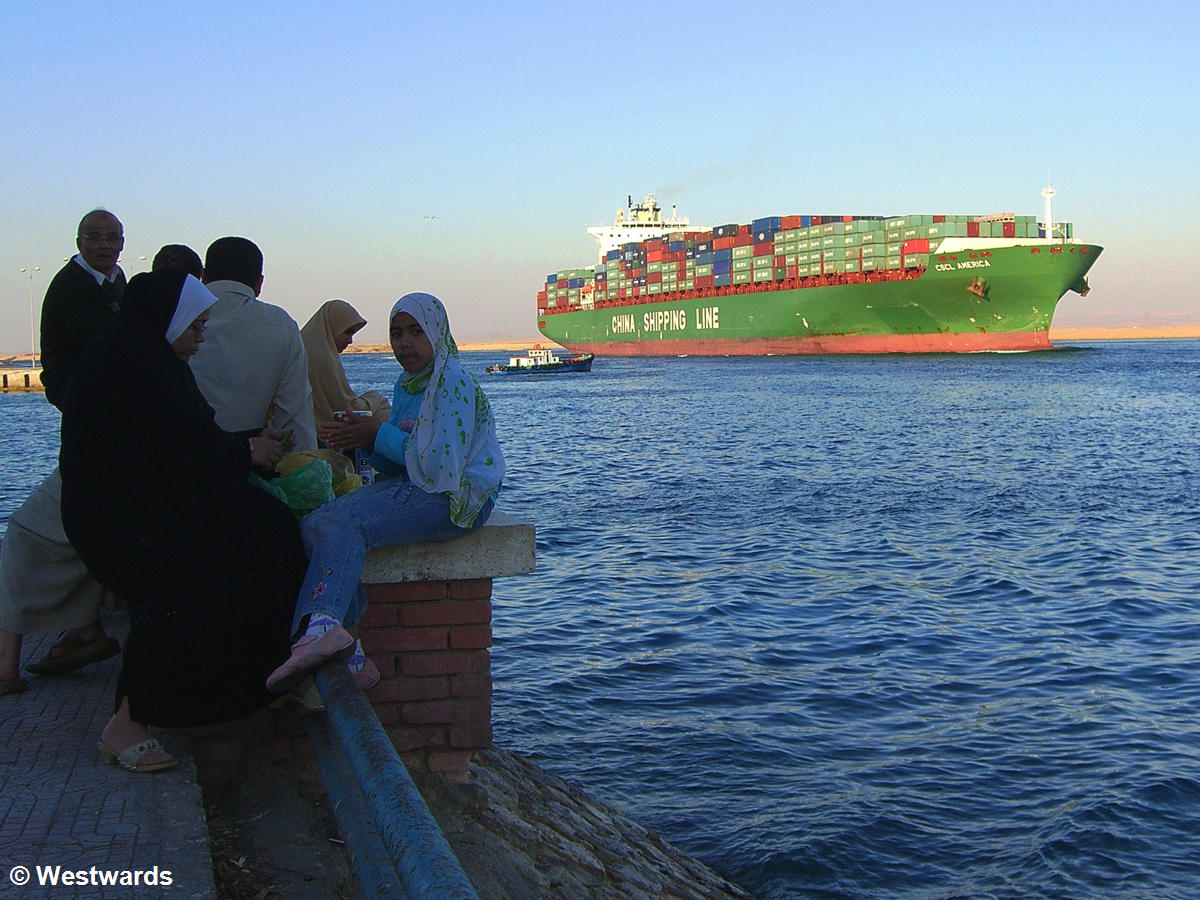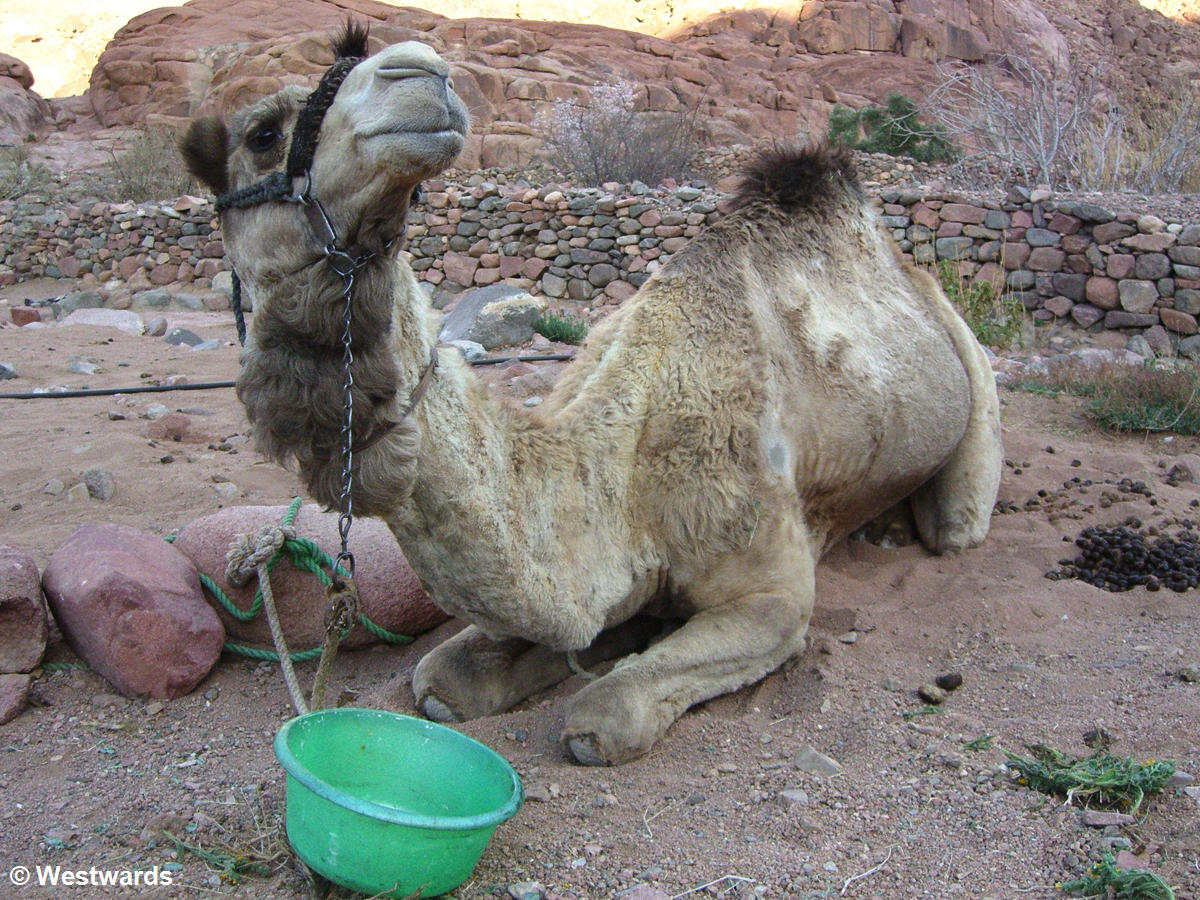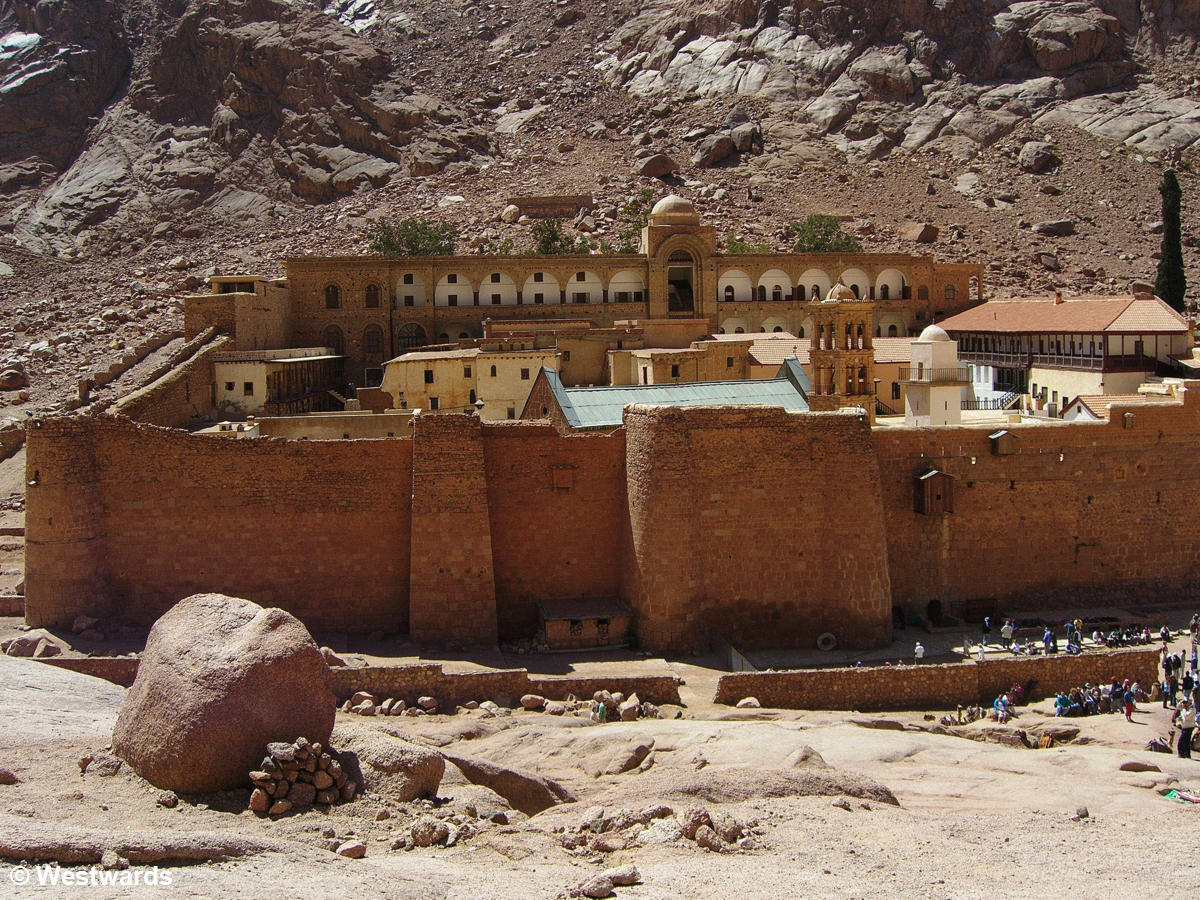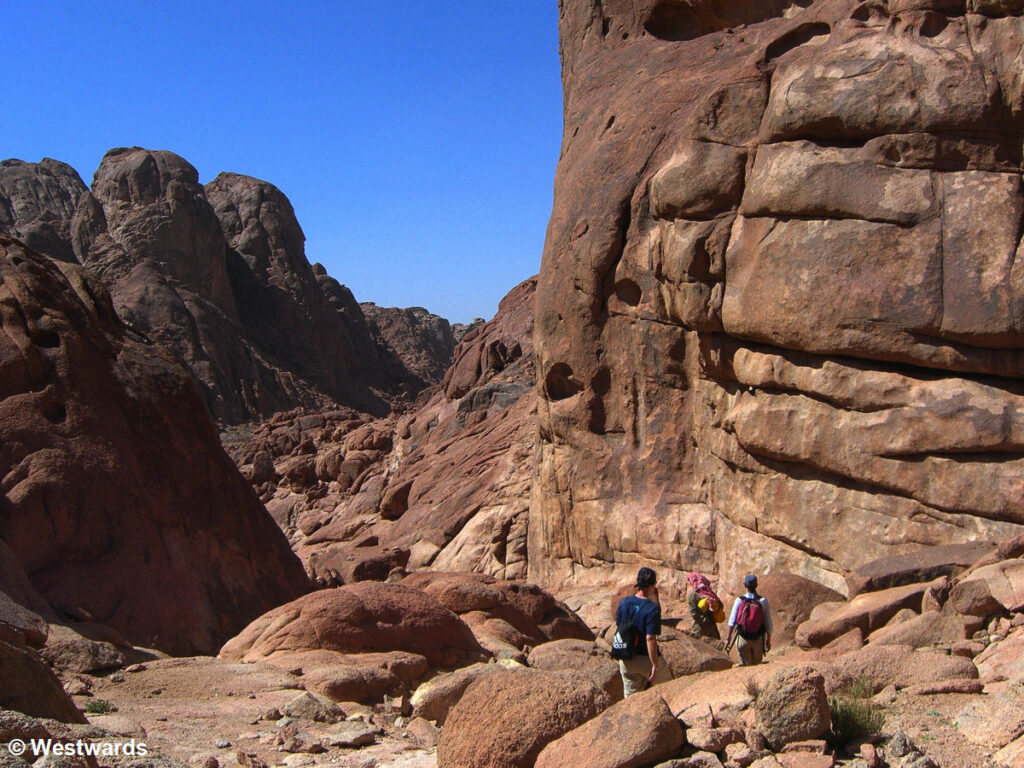
From the corner of our eyes we have noticed them staring at us, whispering and giggling, for the last five minutes. Finally, the father gathers his courage and barks “Where are you from?” while his teenage daughter bursts out in laughter. On Fridays a lot of families bring a picnic to the promenade of the Suez Canal. And once more we smile and answer “from Germany”.
The Suez canal
Then all of us fall silent, and we watch the towering Evergreen Ever Useful approach. On board, hundreds of blue and brown containers are stacked in rows of 16 across and 20 lengthwise. The pilot, who has guided the ship since Port Said, steps down the narrow gangway at the side of the ship onto a small boat that will bring him on shore. We feel a childish happiness thinking of our books and other belongings that must have come through the Suez Canal on a ship like this, on their way from Japan to Germany.

About ten huge container ships follow the Evergreen Ever Useful towards the Indian Ocean. Then the canal is empty again, the families pack their boxes, cushions and footballs and leave. The shy daughter even dares to wave us Good Bye. When we asked in Port Said, the Mediterranean entrance point to the canal, how many ships pass every day, the answer was vague. “Maybe 40?,” the woman at the tourist office guessed, “but I really don’t know.”
Hiking in the Sinai mountains
From Suez, we took an awfully slow bus to El-Milga, a village in the middle of the Sinai mountains. Podgy red sandstone with stripes of a darker, harder stone that sticks out at the ridges like the carapace of a strange dinosaur. From the village we organised a trekking tour for the next few days.

“Come in,” says Rajab, our Bedouin guide, and climbs over a stone wall. This seems to be the regular entrance into a fruit garden in the middle of the desert. Soon we sit under blooming apricot trees and drink one cup after another of heavily sugared tea. Meanwhile Rajab livens up, smoking and chatting with our hosts. Then we start again scrambling over huge boulders until we reach a high-lying Wadi. Only a few times each year, the valley has a lot of water from rain or melting snow, but now it is just a dry desert floor with the occasional date palm. On both sides, strange rock formations rise up, and once we pass a partly mummified donkey. “It has been lying here for five years!,” Rajab beams.
That night we stay at a dirty stone house with a veranda and two very small rooms. In summer during the school holidays, the families move up here from the villages. But for the moment, our Bedouin guides and we are free to use the buildings. Jawali has arrived early with the camel and our provisions and is about to cook dinner over the open fire: rice with lentils and a slightly too salty vegetable soup. “Give me light,” he demands after dinner. With our torch, he rummages among the rubble in one of the rooms and comes back triumphantly with an old iron sheet, the top of an oil ton. Half an hour later, our bread ration for the next day is baking on the sheet while we shift between the cold of the surrounding night and the flames licking out from under the baking sheet.

We decide to sleep outside under the stars, rather than in one of the dusty rooms. With four filthy woollen blankets piled over our sleeping bags and woollen hats we feel like in our traditional house in Tokyo in winter. Only the smacking noises of the camel hobbled a few meters away are unfamiliar. But the sky is luxuriously full of stars.
The next day we walk through more wadis, and climb more mountains. “Before the government built the road, we had to go by camel through that wadi over there to the sea to buy food and other necessities.” We are sitting on the rocky top of 2165 m high Ras Abu’alda and look down, straining our eyes to see the Gulf of Suez in the distance.
St Katherine monastery

Back in El-Milga, we join the hundreds of day tourists to visit St. Katherine, the famous orthodox monastery with its treasure of old icons and manuscripts on the foot of Mt. Sinai. It was built in 330 AD by St Helena beside the burning bush from which God spoke to Moses. Its successor, a common blackberry bush, can be visited in the courtyard. In the afternoon we climb Mount Sinai, where Moses was given the Ten Commandments. Today a very uncomfortable cold wind is ruthlessly blowing, and we hope for Moses that his visit was at a warmer time of the year.





